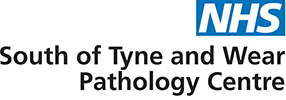VZV (Chicken Pox) PCR
Code:
VZV PCR
Sample Type:
Vesicle, skin, genital or eye swab in viral transport medium (VTM)
Send to laboratory as quickly as possible. If delays likely, refrigerate at 2 to 10 °C
Ref Ranges/Units:
N/A
Turnaround:
3-4 days
Special Precautions/Comments:
N.B. This test is part of a multiplex PCR assay for the detection of Herpes Simplex Virus (HSV-1 and HSV-2), Varicella Zoster Virus (VZV) and Treponema pallidum (Syphilis).
The following sample types have not been validated for the current testing process:
- cobas® PCR Media Uni Swab Sample Kit (Yellow top)
- Eye fluid (vitreous or aqueous humor)
- CSF
Interferences: False negatives may occur if sample is outside of viraemic phase.
Method: Real-time polymerase chain reaction (qPCR) for the simultaneous detection of HSV-1 and HSV-2, VZV and T. pallidum (Syphilis). Calibration: N/A. EQA scheme: QCMD. IQC: Internal kit control (SpeeDx PlexPCR® VHS assay). External positive control material (Zeptomatrix).
Interpretation: Results will be reported as DETECTED (positive), INVALID, or Not detected (negative). A negative result does NOT fully exclude infection. Samples resulted as Invalid will be repeated and a further report issued. Samples may remain invalid due to inhibitory substances within the sample. Clinical comment will be provided for positive samples from non-GUM patients as appropriate. Positive samples may be referred to Newcastle Hospitals Virology Service for confirmatory testing (7-10 day turnaround).
Additional Information:
Background information: Varicella (chickenpox) and zoster (shingles) are two different clinical manifestations of infection with the varicella-zoster virus (VZV). Chickenpox, the primary infection, is a highly contagious disease which spreads rapidly in susceptible populations (e.g. children or immunocompromised adults). It is spread by direct contact or by airborne droplets. The contagious period is from 24 hours before until six or seven days after the appearance of vesicles. In most cases, chickenpox is a mild illness occurring in childhood, characterised by a mild fever and malaise accompanied by a vesicular rash. However, adults with chickenpox usually have a high fever and severe constitutional symptoms. Approximately 20% develop pneumonia. Shingles generally occurs in adults, resulting from a reactivation of latent VZV. Although there is often no apparent reason for zoster to occur, it often is linked to stress, trauma, or certain types of drug therapy.


